Grow Spicy Cayenne Peppers With These Little Known Care Tips From Peter Lickorish


Elizabeth is a Permaculture Garden Designer, Sustainability Consultant and Professional Writer, working as an advocate for positive change. She graduated from the University of St. Andrews with an MA in English and Philosophy and obtained a Diploma in Applied Permaculture Design from the Permaculture Association.
Reviewed By PETER LICKORISH

Peter is a Horticulture Lecturer and self-employed Horticulturist, with a passion for diverse areas of the industry - from garden design to the science behind plant growth and propagation. He has completed the Royal Horticultural Society’s Master of Horticulture (MHort) Award and lectures on RHS courses at Bedford College.
IN THIS GUIDE
CHILLI GUIDES
If you like heat in cooking, Cayenne peppers could be a good crop to grow.
Cayenne peppers are a type of chilli pepper, Capsicum annuum.
It is related to other types of peppers including jalapenos, pimientos and bell peppers.
As part of the Capsicum genus, these peppers are all within the Solanaceae or nightshade family – which means that they are also more distantly related to tomatoes, potatoes, aubergines and more.1Capsicum annuum. (n.d.). PFAF Plant Database. Retrieved March 14, 2023, from https://pfaf.org/user/Plant.aspx?LatinName=Capsicum+annuum
Overview
| Botanical Name | Capsicum annuum |
| Plant Type | Fruit / Vegetable |
| Native Area | American subtropics and tropics |
| Hardiness Rating | H1C |
| Foliage | Annual crop |
| Flowers | Small white flowers from which fruits form |
| When To Sow (Indoors) | January, February, March, April, May, June |
| Harvesting Months | July, August, September |
Sunlight
Preferred
Full Sun
Exposure
Sheltered (usually under cover)
Size
Height
0.5 – 1.5M
Spread
0.5 – 1M
Bloom Time
Summer
Soil
Preferred
Most fertile soil
Moisture
Moist but free-draining
pH
Acidic or neutral
They are a short-lived perennial in their native subtropical and tropical climes, but in temperate climate zones like the UK, are usually grown as an annual crop.
The fruits of these plants are mostly skinny and red, with a curved tip, though there are also some yellow and purple fruited cultivars.
Interestingly, these fruits hang from the stems of the plant, rather than growing upright like some other chilli pepper varieties.
Spiciness & Flavour
There are a number of different named cultivars of Cayenne peppers, which are prized for their spiciness and flavour.
Scoville heat units are used to describe the heat of chilli peppers and most varieties of Cayenne pepper fall within the range of 30,000-50,000 Scoville heat units.2cayenne chile pepper database. (n.d.). The Chileman. Retrieved March 14, 2023, from https://www.thechileman.org/results.php?chile=1&find=cayenne&heat=Any&origin=Any&genus=Any&subscribe=Search;

This puts them more or less in the middle of the range when it comes to pungency.
While most Cayenne peppers are moderately hot, there are some milder variants.
The fruits are often dried and powdered to create cayenne powder, which is used in pest control, and in many spicy dishes.
Why Grow Cayenne Peppers?
Growing spicy chilli peppers is a must for those who like heat in their cooking.
Cayenne peppers may also repel certain insect pests while in active growth – and the powder is sometimes sprinkled as a deterrent to rodents around winter or early spring crops.
Cayenne Varieties
C. annuum ‘Cayenne Red’
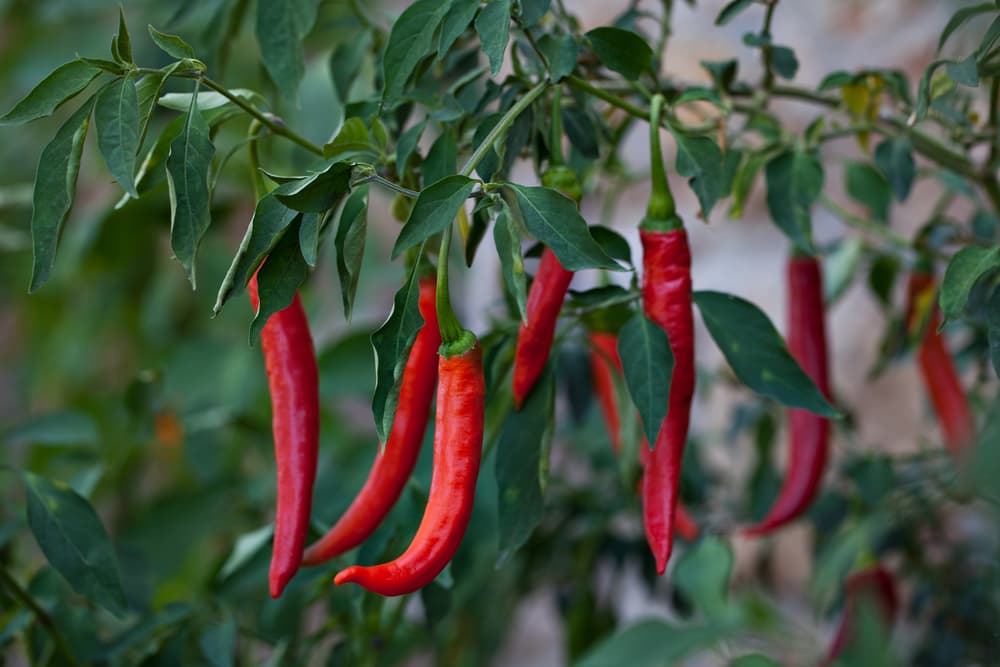
C. annuum var. annuum ‘Ring of Fire’

C. annuum var. annuum (Longum Group)
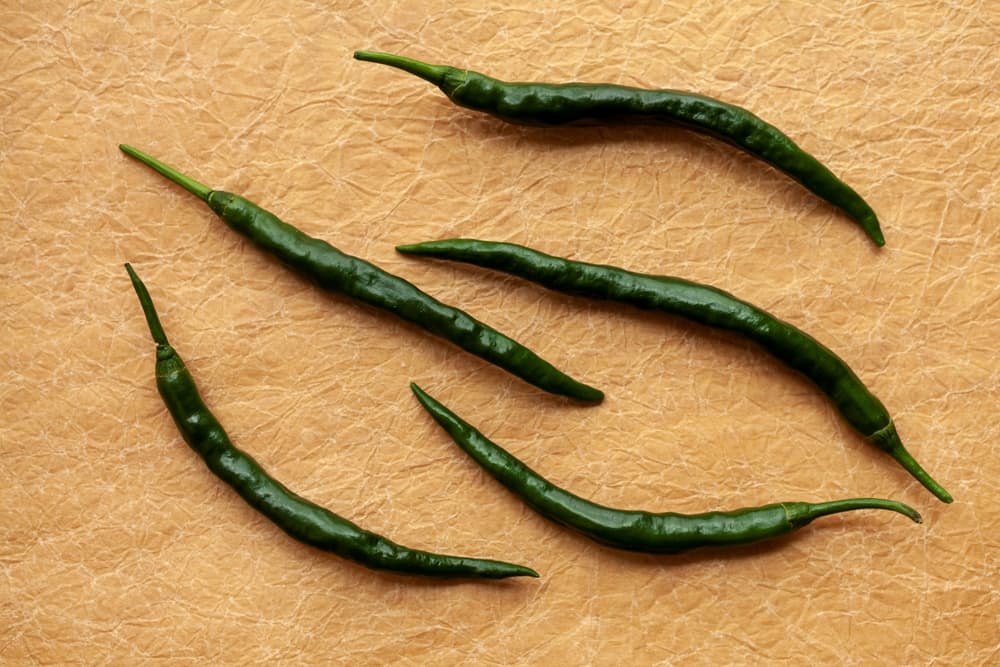
C. annuum var. annuum ‘Golden Cayenne’

C. annuum ‘Cayenne Sweet’

And a few more interesting types that may be of interest to grow:
- C. chinense ‘Carolina Reaper’
- C. annuum var. annuum ‘Chocolate Bell’
- C. annuum ‘Las Cruces Cayenne’
How To Grow Cayenne Peppers
Cayenne peppers are typically grown in climates much warmer than our own.
Temperature
To grow them successfully here in the UK, you will usually have to grow them indoors or undercover in a greenhouse or polytunnel.
Though this species sometimes tolerates a little light frost, they will not normally do well outside in a typical British summer.
Occasionally, however, in warmer, southern parts of the country, it may be possible to grow outdoors in a very warm, protected and sheltered spot.
Soil Requirements
Cayenne peppers, like other peppers, grow best in a moist yet free-draining sandy or loamy soil, which is slightly acidic.
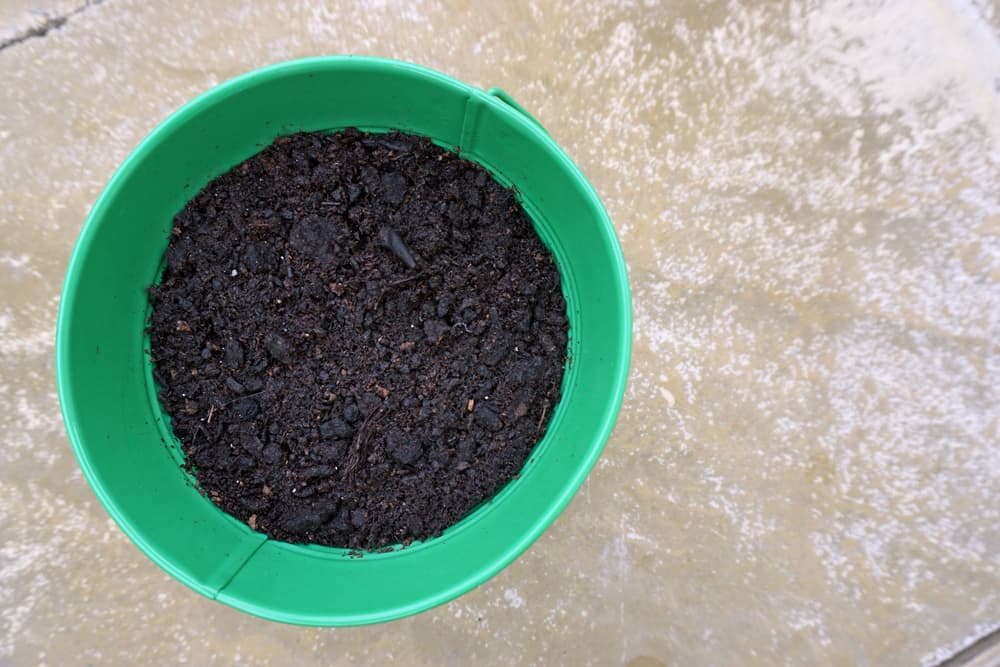
They can also be grown in pots as long as these are filled with a moist yet free-draining, relatively fertile growing medium.
Companion Planting
In terms of companion planting, some good plants to grow with cayenne are said to include aubergines, okra and basil – in fact, any aromatic herb would make for ideal bedfellows – as well as working in harmony in the kitchen.
Peppers can be planted alongside tomatoes, but as joint members of the Nightshade family, a well-adhered crop rotation plan is necessary, to prevent issues with diseases that these two plants share in common.
You should include as many different companion plants as possible when growing tomatoes and peppers together in the same planting scheme.
Sowing Cayenne Seeds
Like other peppers, Cayenne peppers are best sown indoors in the UK early in the year to ensure a worthwhile crop by the end of our relatively short growing season.
The challenge with this is that you will have to make sure that you provide enough heat for seeds to germinate.
You will also need to ensure that the indoors grown seedlings get enough heat, water and light before the weather warms and you can move them to their final growing position (perhaps in a greenhouse or polytunnel).

As a rough rule of thumb, pepper seeds, along with tomato seeds, are usually sown around 6-8 weeks before the last frost date in your area.
Remember, a greenhouse or polytunnel may be reliably frost-free a few weeks before the rest of your garden, so you may be able to sow a little earlier if you will be growing undercover.
It is important to make sure that you provide high enough temperatures for germination to take place.
All pepper seeds will typically need consistent temperatures of between 18-25°C for the best germination rates, and will not usually germinate at all if temperatures fall below 16°C.
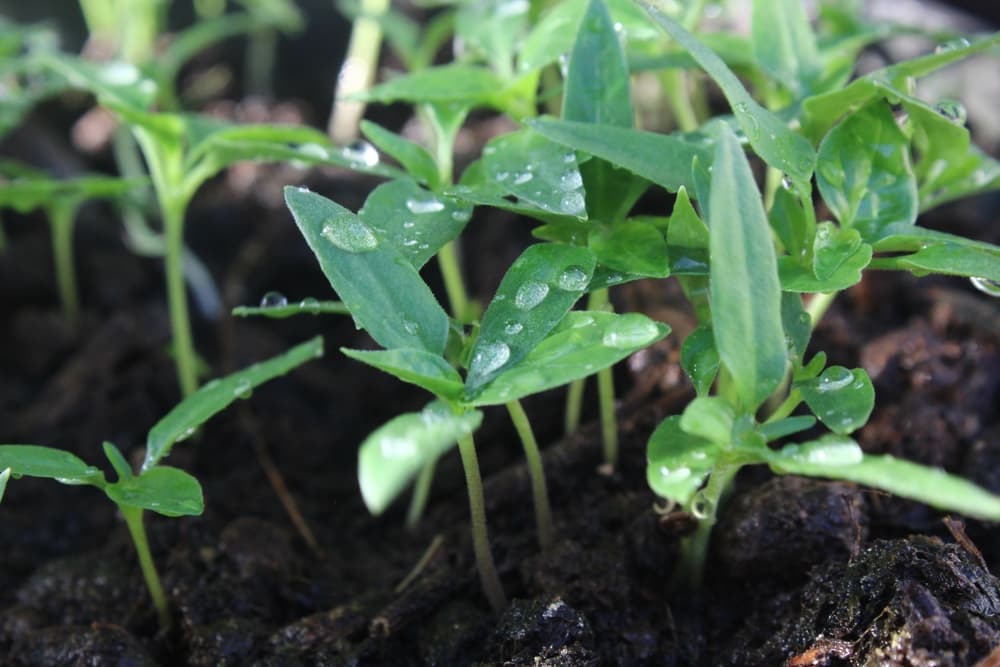
It can be a good idea to use a heated propagator, or to provide some gentle bottom heat to ensure that you get the best results when sowing seeds.
After sowing your seeds in a suitable seed-starting potting mix, the seeds should germinate within around 2-3 weeks.
Legginess
Seedlings can become leggy in low light conditions, so it may be beneficial to use grow lights when sowing early indoors.
Prick out the pepper seedlings once they become large enough to handle, then place them into their own individual pots.
Water your Cayenne pepper seedlings consistently but do not overwater – keep them in as bright a spot as possible until you can harden off your young plants and, if not continuing to grow indoors, plant them out into your greenhouse or polytunnel.
Planting Cayenne Peppers
Hold off placing your Cayenne pepper plants into an unheated greenhouse or polytunnel until you are certain that all risk of frost has passed (at least within the structures).
If a late frost or cold temperatures are suddenly forecast, you can consider protecting the plants with additional cloches or row covers.
If growing in the ground or a raised bed, peppers should be planted around 40-60cm apart in a row, or 1 per square foot in a denser polyculture planting scheme – though these spacing suggestions are just guidelines and spacing can differ depending on your specific approach.

Be sure to consider companion planting and crop rotation when deciding where to place your peppers – and protect the soil around the plants by mulching around your planted peppers with an organic mulch.
A mulch of balanced homemade compost, for example, will get your Cayenne peppers off to a good start.
Cayenne Pepper Care
Cayenne peppers must be cared for carefully and like other peppers, can be rather fussy plants.
One key thing to always remember is that the temperatures in the growing area must remain consistently above around 16-18°C for optimal results.
You need to aim to provide as much sun and warmth as possible to reap a good harvest.
Inconsistent temperatures can easily cause checks in growth and a range of other issues.
Watering
Another very important thing when it comes to caring for Cayenne peppers is water.
The soil or growing medium must be kept consistently moist, but overwatering is not the solution as this can also cause issues.
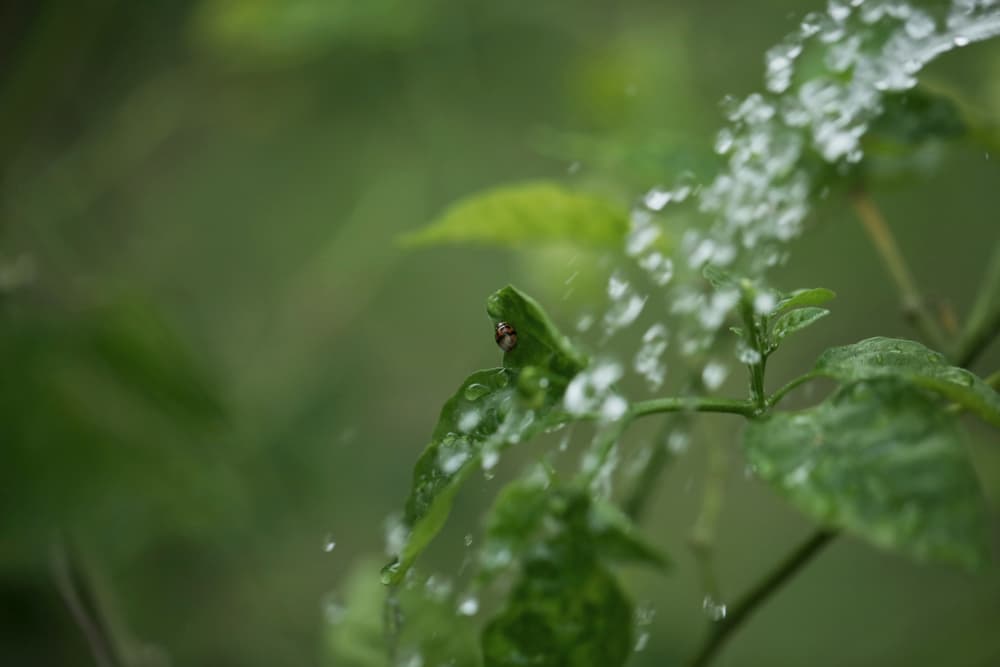
I find that issues with watering are often the cause of most problems when it comes to a pepper crop – so it is important to get into a good routine with watering, whilst not being too overbearing.
Use your finger to check the moisture levels in the soil before watering; I have had a lot of success preventing waterlogging of the roots by bottom-watering with the use of trays.
Feeding
Like other peppers and tomatoes, Cayenne peppers will benefit from the slow-release fertiliser (and moisture control) of an organic mulch.
As well as adding a mulch of compost or similar on planting, you should also consider adding a potassium-rich mulch of comfrey or other potassium-rich plant matter once the flowers and fruits begin to form.
Feeding with a comfrey tea or other potassium-rich liquid feed during flowering and fruiting can also be beneficial – especially when growing Cayenne peppers in containers.
Pruning
A branched pepper plant is usually one that crops well,” says Peter Lickorish, Master Horticulturist.
“To achieve branching, when young plants reach around 20-30cm high, cut or pinch out the top pair of leaves and growing tip. This will make the plant fork.
“Producing flowers too early can also suppress growth longer term, so pinch off any flowers below 20-30cm high, as the plant establishes.
“Gently tie in growing plants to canes, using a figure-of-eight loop of soft string, to help them carry a heavy crop of fruit.”
Common Problems
Aphids and scale can be common problems with pepper plants, especially those grown indoors or undercover.
If growing indoors, it will be challenging to get rid of these through natural predation, though in a greenhouse or polytunnel, make sure the doors are open and you are attracting ladybirds and other beneficial insects to the space.
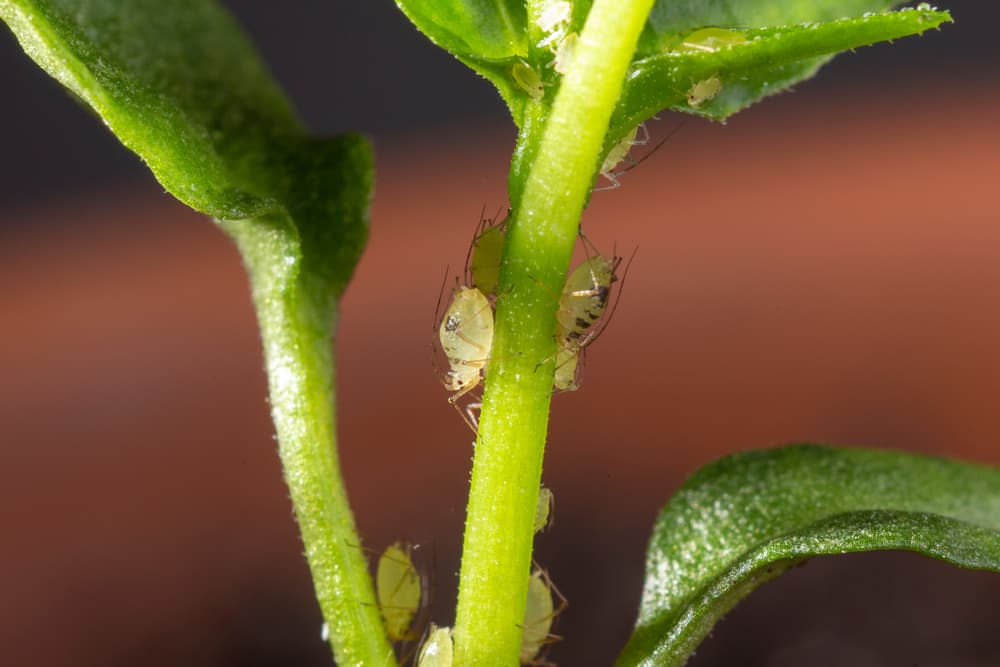
With an extreme problem, you might consider using biological controls.
These are natural predators or species which will harm the pests, and targeted types can be bought online.
Fungal diseases like grey mould can also affect cayenne plants.
Make sure you are watering correctly, and reduce high humidity by avoiding overcrowding and improving ventilation.
Remain vigilant and remove any damaged plant parts before healthy tissue can become infected.
Harvesting Cayenne Peppers
Cayenne peppers will usually be ready to harvest from around 70-80 days after sowing, though of course this can vary depending on the precise conditions.

Generally, you may begin harvesting ripe fruits around midsummer and can often continue to do so well into autumn.
With Cayenne peppers, unlike with some other chilli peppers, you will not usually harvest the fruits at an immature stage but will wait until they are fully red (or reach their final colour for other varieties).
You can then dry your Cayenne peppers in a dehydrator or in your oven – and grind the dried fruits into a powder that can be used in a wide range of different recipes.
References
- 1Capsicum annuum. (n.d.). PFAF Plant Database. Retrieved March 14, 2023, from https://pfaf.org/user/Plant.aspx?LatinName=Capsicum+annuum
- 2cayenne chile pepper database. (n.d.). The Chileman. Retrieved March 14, 2023, from https://www.thechileman.org/results.php?chile=1&find=cayenne&heat=Any&origin=Any&genus=Any&subscribe=Search;
